#Ecommerce Data Scraper
Explore tagged Tumblr posts
Text
Unlocking the Power of eCommerce Scraping Services: A Deep Dive into Web Scraping Retail Data
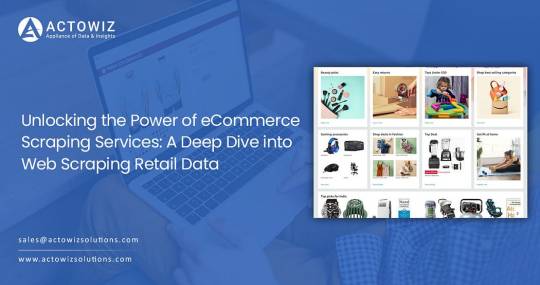
In the dynamic world of eCommerce, data is king. To gain a competitive edge, businesses need access to up-to-date and relevant information about products, prices, customer reviews, and market trends. This is where eCommerce scraping services come into play.
In this blog, we will explore the fascinating world of eCommerce data scraping and how it can revolutionize your business.
What is eCommerce Data Scraping?
eCommerce data scraping, also known as web scraping retail data, is the process of extracting information from various eCommerce websites automatically. This data can include product details, pricing information, customer reviews, stock availability, and more. The scraped data is then structured and organized for analysis, helping businesses make informed decisions.
The Benefits of eCommerce Data Scraping:
Competitive Intelligence: eCommerce scraping services allow businesses to monitor competitors’ prices, product offerings, and customer reviews in real-time. This helps in adjusting your strategies to stay ahead in the market.
Price Optimization: With access to pricing data from multiple sources, businesses can optimize their pricing strategies to attract more customers while maintaining healthy profit margins.
Product Catalog Expansion: Web scraping eCommerce data enables businesses to rapidly expand their product catalog by adding new products from different websites without manual data entry.
Customer Insights: Analyzing customer reviews and feedback from eCommerce websites can provide valuable insights into customer preferences and pain points, helping improve products and services.
Inventory Management: eCommerce data scraping can also help in monitoring stock availability, ensuring you never run out of popular products.
Challenges of eCommerce Scraping:
While eCommerce data scraping offers numerous advantages, it also comes with some challenges:
Website Structure Changes: eCommerce websites frequently update their designs and structures, which can break scraping scripts. Regular maintenance is required to adapt to these changes.
Legal and Ethical Considerations: Scraping data from websites without permission may infringe on copyright and terms of service. It’s essential to be aware of and comply with legal and ethical guidelines.
Data Quality: Ensuring the accuracy and quality of scraped data can be challenging, as it often requires data cleaning and validation processes.
Choosing the Right eCommerce Scraping Service:
When selecting an eCommerce scraping service, consider the following factors:
Data Quality: Look for a service that provides high-quality and accurate data.
Scalability: Ensure the service can handle your data volume requirements.
Compliance: Verify that the service complies with legal and ethical standards.
Customization: Choose a service that allows customization to meet your specific data needs.
Conclusion: eCommerce scraping services are powerful tools for businesses seeking a competitive advantage in the online marketplace. They provide access to valuable data that can inform pricing strategies, product offerings, and customer engagement. However, it’s essential to use these services responsibly, respecting legal and ethical boundaries. When used effectively, eCommerce data scraping can transform your business and drive growth in an increasingly competitive eCommerce landscape.
#Ecommerce scraping services#Ecommerce Data Scraper#Web Scraping Retail Data#Scrape Ecommerce Data#Retail Scraper
0 notes
Text
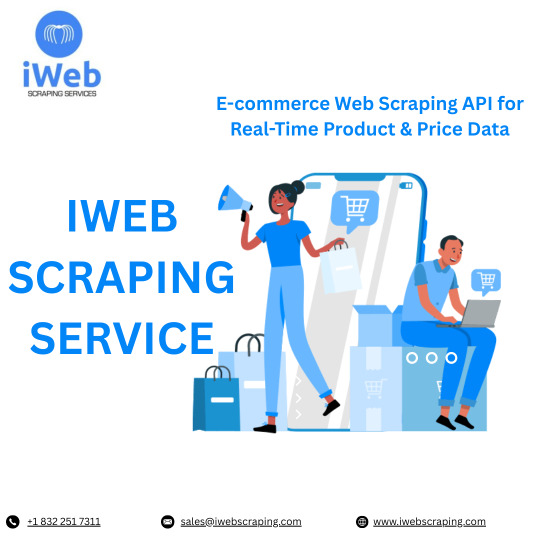
E-commerce Web Scraping API for Accurate Product & Pricing Insights
Access structured e-commerce data efficiently with a robust web scraping API for online stores, marketplaces, and retail platforms. This API helps collect data on product listings, prices, reviews, stock availability, and seller details from top e-commerce sites. Ideal for businesses monitoring competitors, following trends, or managing records, it provides consistent and correct results. Built to scale, the service supports high-volume requests and delivers results in easy-to-integrate formats like JSON or CSV. Whether you need data from Amazon, eBay, or Walmart. iWeb Scraping provides unique e-commerce data scraping services. Learn more about the service components and pricing by visiting iWebScraping E-commerce Data Services.
0 notes
Text
eCommerce data scraping extracts product details, prices, reviews, and inventory data from eCommerce platforms to gain actionable insights. This powerful tool supports price monitoring, market research, and competitor analysis, enabling businesses to optimize strategies and boost growth effectively.
#eCommerce Data Scraping#Sentiment Analysis#Web Scraping Services#Scraping eCommerce Websites#eCommerce Web Scraper
0 notes
Text
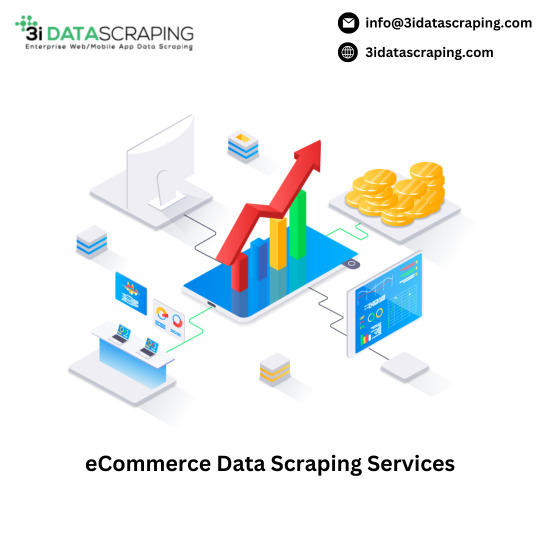
eCommerce Data Scraping Services extract valuable information from online stores to help businesses analyze competitor prices, product details, reviews, stock levels, and promotions. These services automate data collection using advanced tools, ensuring up-to-date, accurate data. They support decision-making in pricing, inventory management, and market strategy, while adhering to legal and ethical standards.
#eCommerce Data Scraping Services#ecommerce scraping services#scrape data from ecommerce#ecommerce scraper#ecommerce data scraping#ecommerce web scraping
0 notes
Text
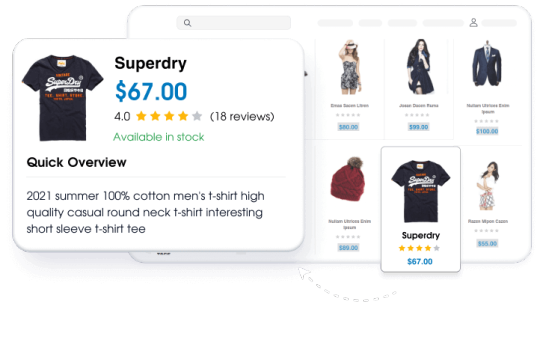
E-commerce data scraping provides detailed information on market dynamics, prevailing patterns, pricing data, competitors’ practices, and challenges.
Scrape E-commerce data such as products, pricing, deals and offers, customer reviews, ratings, text, links, seller details, images, and more. Avail of the E-commerce data from any dynamic website and get an edge in the competitive market. Boost Your Business Growth, increase revenue, and improve your efficiency with Lensnure's custom e-commerce web scraping services.
We have a team of highly qualified and experienced professionals in web data scraping.
#web scraping services#data extraction#ecommerce data extraction#ecommerce web scraping#retail data scraping#scrape#retail store location data#Lensnure Solutions#web scraper#big data
1 note
·
View note
Text
Unveiling the Power of Retailscrape: Competitor Price Monitoring, Intelligent Pricing, and E-commerce Price Tracking
Experience the power of precise competitor price monitoring with Retail Scrape, designed to elevate your sales growth and boost profit margins.
Know more : https://medium.com/@parthspatel321/unveiling-the-power-of-retailscrape-competitor-price-monitoring-intelligent-pricing-and-dc624214d93a
#Competitorpricemonitoring#Intelligent Pricing#E Commerce Price Tracking#Scrape Ecommerce Data#Ecommerce Scraper
0 notes
Text
Adaptive Web Scraping: The Future of Reliable Data Extraction from Dynamic Websites

In today’s fast-paced digital world, #websites are constantly evolving — layouts shift, #HTML structures change, and #dynamic content is rendered differently across platforms. Traditional #scraping techniques often break under these changes, leading to missed #data, system failures, and costly delays.
At #iWebDataScraping, we’ve built #adaptive scraping solutions that are designed to keep up. Our cutting-edge technology uses #intelligentSelectors and #AI-drivenModels that seamlessly adjust to even the smallest HTML or structural changes, ensuring uninterrupted, high-accuracy #dataDelivery — no matter how frequently the site updates.
💡 Whether you're extracting #pricingData from #eCommerce platforms, tracking #reviews across marketplaces, or pulling listings from real-time #booking or #foodDelivery sites — adaptive scraping ensures you never miss a beat.
🔧 Key Features:
#AI-powered selectors that automatically adapt to changing layouts
#RealTime monitoring to avoid #dataDowntime
Seamless integration with your #analytics stack
#Scalable solutions for large #dataPipelines
Support for complex, #JavaScript-heavy websites
When your business relies on accurate, real-time insights, don't let unstable scrapers hold you back. Upgrade to #adaptiveWebScraping and extract with confidence.
0 notes
Text
Global Guide to Web Scraping Wine Pricing Trends
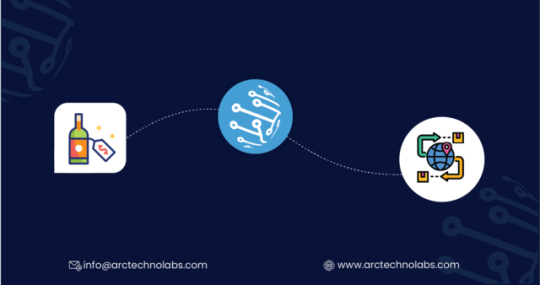
Introduction
In an era where consumer preferences and global trade dynamics shift rapidly, understanding real-time wine pricing trends is crucial for businesses in the alcohol industry. Web scraping wine pricing trends has become a powerful solution for importers, distributors, sommeliers, and wine retailers seeking a data-driven edge in global markets.
By using advanced tools to Scrape Alcohol Price Data Intelligence, professionals can access updated price listings, market fluctuations, regional demand patterns, and promotional pricing—helping them make smarter procurement and pricing decisions.
The Role of Data in the Wine Industry
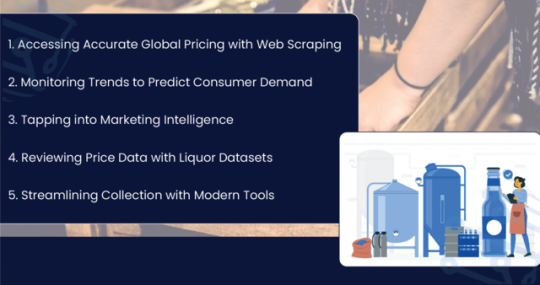
The global wine industry is driven by intricate factors—vintage, region, availability, and seasonal consumption—that impact pricing and demand. As the market becomes more competitive and digitalized, businesses can no longer afford to rely on outdated reports or manual tracking. Instead, they are turning to Web Scraping Services and intelligent tools to gather real-time insights, allowing them to stay agile and data-informed in a fluctuating industry.
1. Accessing Accurate Global Pricing with Web Scraping
One of the biggest advantages of using Web scraping wine pricing trends is the ability to collect pricing data across various geographies. Importers, distributors, and sommeliers can monitor price shifts for specific varietals in real time.
Example Stats: Average Retail Wine Prices (2020–2025)
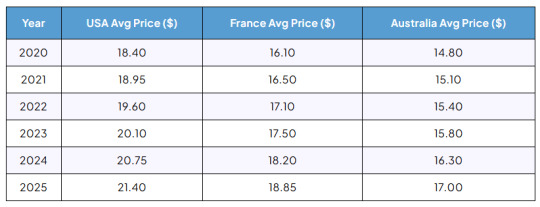
2. Monitoring Trends to Predict Consumer Demand
By using a Wine industry data scraper tool, businesses can Analyze wine sales trends 2025 to predict seasonal demand patterns and adjust inventories accordingly.
Example Stats: Seasonal Sales Growth (%) by Quarter (2020–2025)
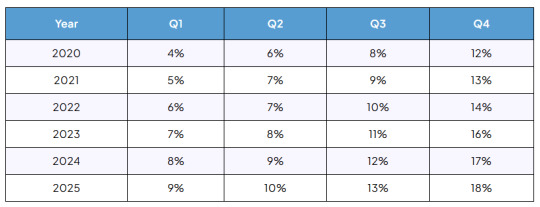
3. Tapping into Marketing Intelligence
Advanced scrapers can Extract wine marketing data such as promotional offers, product descriptions, and regional campaigns from online retailers. This can be especially helpful for crafting hyper-targeted campaigns.
Example: Marketing Mentions by Region (2025)

4. Reviewing Price Data with Liquor Datasets
With access to Liquor or Alcohol Price Review Datasets , stakeholders can monitor long-term price trends, promotional impacts, and regional differentials to plan bulk orders or adjust their retail pricing strategies.
Example: Price Variation for Red Wines (2020–2025)
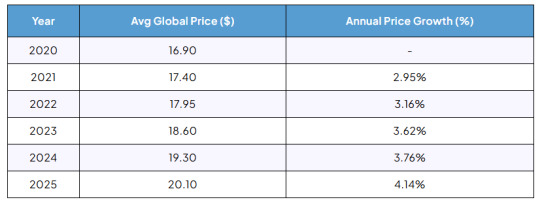
5. Streamlining Collection with Modern Tools
Businesses now employ Web Scraping Liquor or Alcohol Data technologies such as Web Scraping API Services and Mobile App Scraping Services to automatically Scrape wine sales data 2025 and retrieve structured insights without maintaining manual workflows.
Using these tools, companies can Scrape Alcohol Price Data Intelligence directly from marketplaces, apps, and eCommerce stores in real time—enhancing agility and responsiveness.
By investing in smart solutions like Web scraping wine pricing trends, companies gain a competitive advantage through accurate forecasting, better marketing strategies, and optimized purchasing. Data is no longer optional in the wine trade—it's your most valuable asset.
Key Benefits of Web Scraping Wine Pricing Trends

1. Global Price Benchmarking
With Web scraping wine pricing trends, importers can benchmark prices across countries and retailers. This helps in identifying profitable sourcing regions and preventing overpricing in local markets.
Example:

2. Sales Forecasting and Demand Planning
Distributors can Analyze wine sales trends 2025 by combining pricing data with seasonal sales activity. This helps forecast stock requirements and optimize distribution.
Example:

3. Retailer and Competitor Analysis
Using a Wine industry data scraper tool, sommeliers and retailers can monitor top-performing SKUs, limited-edition releases, and pricing strategies of competitors.
Example:

4. Extracting Marketing Insights
Professionals can Extract wine marketing data from promotional banners, discount listings, and regional campaigns. This intelligence can guide more effective marketing and ad targeting.
5. Mobile App Data Insights
Many wine retailers now offer mobile-exclusive deals and flash sales. Through Mobile App Scraping Services, businesses can collect this app-specific data and integrate it into pricing models for more competitive offerings.
Tools Used in Scraping Alcohol Data
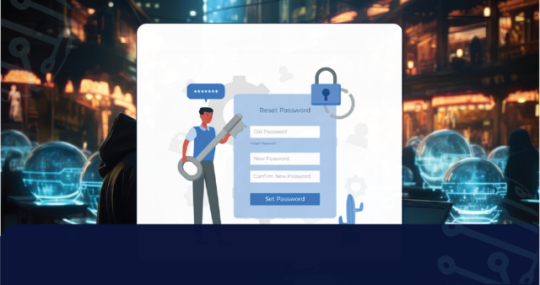
As the global wine and liquor industry shifts toward data-driven strategies, businesses increasingly rely on robust tools specifically designed for Web Scraping Liquor or Alcohol Data and compiling Liquor or Alcohol Price Review Datasets. These tools must be capable of handling dynamic content, JavaScript-rendered pricing modules, and anti-bot mechanisms such as CAPTCHA and IP restrictions.
Modern Web Scraping Services employ scalable and flexible infrastructures to crawl thousands of wine and liquor product pages daily. Whether it's eCommerce platforms, regional distributor websites, or global wine trading portals, these tools ensure high data accuracy and consistency.
To Scrape wine sales data 2025 effectively, companies integrate Web Scraping API Services to fetch real-time pricing, availability, and promotional information. APIs ensure continuous, structured delivery of data, enabling wine importers and marketers to Analyze wine sales trends 2025 and react quickly to shifting market conditions.
In addition, Mobile App Scraping Services are used to extract pricing and offer-related content from liquor and wine delivery apps—many of which feature app-exclusive rates or localized offers not visible on web portals.
Advanced Wine industry data scraper tools not only collect data but also normalize and clean it, enabling organizations to Extract wine marketing data efficiently for analytics dashboards, CRM systems, or pricing intelligence platforms. These tools help businesses Scrape Alcohol Price Data Intelligence from multi-language and multi-currency platforms with high accuracy.
By leveraging the power of Web scraping wine pricing trends, companies in the liquor and wine space gain a competitive edge—ensuring they stay ahead of pricing shifts, seasonal fluctuations, and consumer demand in every region.
ArcTechnolabs integrates these modern tools with precision to deliver actionable insights from global alcohol data sources.
Why Choose ArcTechnolabs?
At ArcTechnolabs, we offer end-to-end Web Scraping Services tailored specifically to the wine and alcohol industry. Our expertise includes building powerful Wine industry data scraper tools designed for both global and regional coverage. We provide robust Web Scraping API Services that automate real-time data delivery, ensuring you have access to the most up-to-date information at all times. Our Mobile App Scraping Services are fully scalable, enabling you to access exclusive pricing and promotional data often locked behind mobile platforms.
We also utilize advanced scraping techniques to extract data from JavaScript-heavy websites and protected sources, overcoming typical scraping challenges like CAPTCHAs and geo-restrictions. For businesses looking to make informed decisions, we deliver custom dashboards and analytics tools that help you Analyze wine sales trends 2025 effortlessly.'
Whether you want to Scrape BookMyShow movie ticket data today or Scrape Alcohol Price Data Intelligence tomorrow, ArcTechnolabs builds flexible, industry-specific scraping solutions that evolve with your business goals.
Conclusion
The global wine market is rich in opportunity—but only for those who stay informed. By leveraging Web scraping wine pricing trends, importers and sommeliers gain the competitive advantage needed to forecast accurately, price competitively, and market intelligently. With ArcTechnolabs as your data partner, you can transform fragmented online wine listings into actionable intelligence that fuels your business success. Ready to unlock real-time wine pricing insights? Contact ArcTechnolabs today for a custom scraping solution built for your market!
Source >> https://www.arctechnolabs.com/wine-pricing-data-scraping-global-trends.php
🚀 Fuel your growth with real-time data! 📩 [email protected] | 📞 +1 424 377 7584 ArcTechnolabs – Data that drives decisions.
#WebScrapingWinePricingTrends#ScrapeAlcoholPriceDataIntelligence#LiquorOrAlcoholPriceReviewDatasets#ExtractWineMarketingData#WebScrapingLiquorOrAlcoholData#WebScrapingAPIServices#ArcTechnolabs
0 notes
Text
🛒 Supercharge Grocery Intelligence with Blinkit Data Scraping!

In the fast-moving world of online grocery, real-time access to Blinkit’s product data gives you a strategic advantage. From dynamic pricing to trending SKUs and discounts—RealDataAPI’s Blinkit Grocery Data Scraper turns public data into powerful business insights.
📌 Key Benefits & Insights:
✅ Extract grocery product names, prices, availability & categories
✅ Monitor competitor pricing and offers across locations
✅ Track inventory and delivery slots for better operations
✅ Identify pricing trends, discounts, and seasonal patterns
✅ Automate data feeds into inventory, pricing, and BI systems
💡 “Grocery data isn’t just for eCommerce—it's fuel for market research, pricing strategy & logistics.”
This solution is ideal for retailers, CPG brands, data aggregators, researchers, and pricing analysts looking to stay ahead of consumer behavior and market shifts.
📩 Contact us: [email protected]
0 notes
Text
How to Integrate WooCommerce Scraper into Your Business Workflow
In today’s fast-paced eCommerce environment, staying ahead means automating repetitive tasks and making data-driven decisions. If you manage a WooCommerce store, you’ve likely spent hours handling product data, competitor pricing, and inventory updates. That’s where a WooCommerce Scraper becomes a game-changer. Integrated seamlessly into your workflow, it can help you collect, update, and analyze data more efficiently, freeing up your time and boosting operational productivity.

In this blog, we’ll break down what a WooCommerce scraper is, its benefits, and how to effectively integrate it into your business operations.
What is a WooCommerce Scraper?
A WooCommerce scraper is a tool designed to extract data from WooCommerce-powered websites. This data could include:
Product titles, images, descriptions
Prices and discounts
Reviews and ratings
Stock status and availability
Such a tool automates the collection of this information, which is useful for e-commerce entrepreneurs, data analysts, and digital marketers. Whether you're monitoring competitors or syncing product listings across multiple platforms, a WooCommerce scraper can save hours of manual work.
Why Businesses Use WooCommerce Scrapers
Before diving into the integration process, let’s look at the key reasons businesses rely on scraping tools:
Competitor Price Monitoring
Stay competitive by tracking pricing trends across similar WooCommerce stores. Automated scrapers can pull this data daily, helping you optimize your pricing strategy in real time.
Bulk Product Management
Import product data at scale from suppliers or marketplaces. Instead of manually updating hundreds of SKUs, use a scraper to auto-populate your database with relevant information.
Enhanced Market Research
Get a snapshot of what’s trending in your niche. Use scrapers to gather data about top-selling products, customer reviews, and seasonal demand.
Inventory Tracking
Avoid stockouts or overstocking by monitoring inventory availability from your suppliers or competitors.
How to Integrate a WooCommerce Scraper Into Your Workflow
Integrating a WooCommerce scraper into your business processes might sound technical, but with the right approach, it can be seamless and highly beneficial. Whether you're aiming to automate competitor tracking, streamline product imports, or maintain inventory accuracy, aligning your scraper with your existing workflow ensures efficiency and scalability. Below is a step-by-step guide to help you get started.
Step 1: Define Your Use Case
Start by identifying what you want to achieve. Is it competitive analysis? Supplier data syncing? Or updating internal catalogs? Clarifying this helps you choose the right scraping strategy.
Step 2: Choose the Right Scraper Tool
There are multiple tools available, ranging from browser-based scrapers to custom-built Python scripts. Some popular options include:
Octoparse
ParseHub
Python-based scrapers using BeautifulSoup or Scrapy
API integrations for WooCommerce
For enterprise-level needs, consider working with a provider like TagX, which offers custom scraping solutions with scalability and accuracy in mind.
Step 3: Automate with Cron Jobs or APIs
For recurring tasks, automation is key. Set up cron jobs or use APIs to run scrapers at scheduled intervals. This ensures that your database stays up-to-date without manual intervention.
Step 4: Parse and Clean Your Data
Raw scraped data often contains HTML tags, formatting issues, or duplicates. Use tools or scripts to clean and structure the data before importing it into your systems.
Step 5: Integrate with Your CMS or ERP
Once cleaned, import the data into your WooCommerce backend or link it with your ERP or PIM (Product Information Management) system. Many scraping tools offer CSV or JSON outputs that are easy to integrate.
Common Challenges in WooCommerce Scraping (And Solutions)
Changing Site Structures
WooCommerce themes can differ, and any update might break your script. Solution: Use dynamic selectors or AI-powered tools that adapt automatically.
Rate Limiting and Captchas
Some sites use rate limiting or CAPTCHAs to block bots. Solution: Use rotating proxies, headless browsers like Puppeteer, or work with scraping service providers.
Data Duplication or Inaccuracy
Messy data can lead to poor business decisions. Solution: Implement deduplication logic and validation rules before importing data.
Tips for Maintaining an Ethical Scraping Strategy
Respect Robots.txt Files: Always check the site’s scraping policy.
Avoid Overloading Servers: Schedule scrapers during low-traffic hours.
Use the Data Responsibly: Don’t scrape copyrighted or sensitive data.
Why Choose TagX for WooCommerce Scraping?
While it's possible to set up a basic WooCommerce scraper on your own, scaling it, maintaining data accuracy, and handling complex scraping tasks require deep technical expertise. TagX’s professionals offer end-to-end scraping solutions tailored specifically for e-commerce businesses. Whether you're looking to automate product data extraction, monitor competitor pricing, or implement web scraping using AI at scale. Key Reasons to Choose TagX:
AI-Powered Scraping: Go beyond basic extraction with intelligent scraping powered by machine learning and natural language processing.
Scalable Infrastructure: Whether you're scraping hundreds or millions of pages, TagX ensures high performance and minimal downtime.
Custom Integration: TagX enables seamless integration of scrapers directly into your CMS, ERP, or PIM systems, ensuring a streamlined workflow.
Ethical and Compliant Practices: All scraping is conducted responsibly, adhering to industry best practices and compliance standards.
With us, you’re not just adopting a tool—you’re gaining a strategic partner that understands the nuances of modern eCommerce data operations.
Final Thoughts
Integrating a WooCommerce scraper into your business workflow is no longer just a technical choice—it’s a strategic advantage. From automating tedious tasks to extracting market intelligence, scraping tools empower businesses to operate faster and smarter.
As your data requirements evolve, consider exploring web scraping using AI to future-proof your automation strategy. And for seamless implementation, TagX offers the technology and expertise to help you unlock the full value of your data.
0 notes
Text
AI & Machine Learning | Quick Commerce Data Scraping Role
Introduction
The rise of Quick Commerce (Q-Commerce) has transformed the way businesses manage inventory, pricing, and customer demands. With ultra-fast delivery expectations from platforms like Blinkit, Instacart, Getir, Swiggy Instamart, and Gorillas, businesses need real-time, data-driven insights to stay ahead. AI (Artificial Intelligence) and ML (Machine Learning) are revolutionizing data scraping for quick commerce by automating processes, enhancing accuracy, and providing predictive insights.
Retail Scrape, a leader in AI-driven web and mobile app scraping, enables businesses to extract valuable data to optimize pricing, monitor stock availability, and analyze market trends. This blog explores how AI & ML are reshaping Quick Commerce Data Scraping to drive smarter business decisions.
Why AI & ML are Crucial for Quick Commerce Scraping
Automating Data Extraction
Handling CAPTCHA & Anti-Bot Protections
Predicting Pricing & Demand Trends
Processing Large-Scale Data Efficiently
Ensuring High Data Accuracy
How AI & ML Enhance Quick Commerce Data Scraping
1. AI-Driven Dynamic Pricing Scraping
2. Machine Learning for Inventory Tracking
3. AI-Powered Competitor Analysis
4. ML-Driven Sentiment Analysis for Customer Insights
Challenges in AI-Powered Quick Commerce Scraping & Solutions
AI-powered solutions help overcome key web scraping challenges. When websites change structure often, machine learning scrapers adapt automatically. For tough anti-scraping tools like CAPTCHAs and bot detection, AI uses rotating proxies and human-like interactions. Real-time pricing and stock changes are tracked using scheduled scrapers.
Geo-blocked deals and personalized offers are accessed with geo-targeted proxies and behavior replication. Large data volumes and API limits are handled with request throttling and cloud-based AI scraping. AI also cleans messy data using NLP to turn raw HTML into insights. Finally, data from web, mobile, and APIs is unified using AI tools that merge different formats like JSON and CSV.
Industries Benefiting from AI & ML in Quick Commerce Scraping
1. eCommerce & Retail
2. FMCG & Grocery Brands
3. Market Research & Analytics Firms
4. Logistics & Supply Chain Companies
How Retail Scrape Leverages AI & ML for Data Scraping
Retail Scrape provides AI-driven Quick Commerce Data Scraping Solutions to help businesses harness actionable insights. Our offerings include:
1. Automated Web & Mobile App Scraping for Quick Commerce Data.
2. Competitor Price & Inventory Tracking with AI-Powered Analysis.
3. Real-Time Data Extraction & API Integration.
4. Custom Dashboards for Data Visualization & Predictive Insights.
Conclusion
AI and ML are transforming Quick Commerce Data Scraping by enabling businesses to make smarter, data-driven decisions. With the rapid evolution of Blinkit, Getir, Instacart, and Swiggy Instamart, leveraging AI-powered scraping ensures businesses stay ahead of competitors.
With Retail Scrape’s AI-driven solutions, companies can efficiently extract, analyze, and utilize real-time pricing, inventory, and market insights for growth and profitability.
Looking to integrate AI-powered Quick Commerce Scraping? Contact Retail Scrape today for cutting-edge data extraction solutions!
Read more >>https://www.retailscrape.com/ai-machine-learning-quick-commerce-data-scraping.php
officially published by https://www.retailscrape.com/.
#QuickCommerceDataScrapingSolutions#AutomatingDataExtraction#DynamicPricingScraping#ScrapeWithAIAndML#MobileAppScraping#QuickCommerceData#RevolutionizingDataScraping#RealTimeDataExtraction#BlinkitDataExtraction#InstacartDataExtraction#SwiggyInstamartDataExtraction
0 notes
Text
eCommerce Scraping Services: A Deep Dive into Web Scraping Retail Data

In the dynamic world of eCommerce, data is king. To gain a competitive edge, businesses need access to up-to-date and relevant information about products, prices, customer reviews, and market trends. This is where eCommerce scraping services come into play.
In this blog, we will explore the fascinating world of eCommerce data scraping and how it can revolutionize your business.
What is eCommerce Data Scraping?
eCommerce data scraping, also known as web scraping retail data, is the process of extracting information from various eCommerce websites automatically. This data can include product details, pricing information, customer reviews, stock availability, and more. The scraped data is then structured and organized for analysis, helping businesses make informed decisions.
The Benefits of eCommerce Data Scraping:
Competitive Intelligence: eCommerce scraping services allow businesses to monitor competitors’ prices, product offerings, and customer reviews in real-time. This helps in adjusting your strategies to stay ahead in the market.
Price Optimization: With access to pricing data from multiple sources, businesses can optimize their pricing strategies to attract more customers while maintaining healthy profit margins.
Product Catalog Expansion: Web scraping eCommerce data enables businesses to rapidly expand their product catalog by adding new products from different websites without manual data entry.
Customer Insights: Analyzing customer reviews and feedback from eCommerce websites can provide valuable insights into customer preferences and pain points, helping improve products and services.
Inventory Management: eCommerce data scraping can also help in monitoring stock availability, ensuring you never run out of popular products.
Challenges of eCommerce Scraping:
While eCommerce data scraping offers numerous advantages, it also comes with some challenges:
Website Structure Changes: eCommerce websites frequently update their designs and structures, which can break scraping scripts. Regular maintenance is required to adapt to these changes.
Legal and Ethical Considerations: Scraping data from websites without permission may infringe on copyright and terms of service. It’s essential to be aware of and comply with legal and ethical guidelines.
Data Quality: Ensuring the accuracy and quality of scraped data can be challenging, as it often requires data cleaning and validation processes.
Choosing the Right eCommerce Scraping Service:
When selecting an eCommerce scraping service, consider the following factors:
Data Quality: Look for a service that provides high-quality and accurate data.
Scalability: Ensure the service can handle your data volume requirements.
Compliance: Verify that the service complies with legal and ethical standards.
Customization: Choose a service that allows customization to meet your specific data needs.
Conclusion: eCommerce scraping services are powerful tools for businesses seeking a competitive advantage in the online marketplace. They provide access to valuable data that can inform pricing strategies, product offerings, and customer engagement. However, it’s essential to use these services responsibly, respecting legal and ethical boundaries. When used effectively, eCommerce data scraping can transform your business and drive growth in an increasingly competitive eCommerce landscape.
#Ecommerce scraping services#Ecommerce Data Scraper#Web Scraping Retail Data#Scrape Ecommerce Data#Retail Scraper
0 notes
Text
eCommerce Data Scraping - eCommerce Scraper - Scraping eCommerce Websites
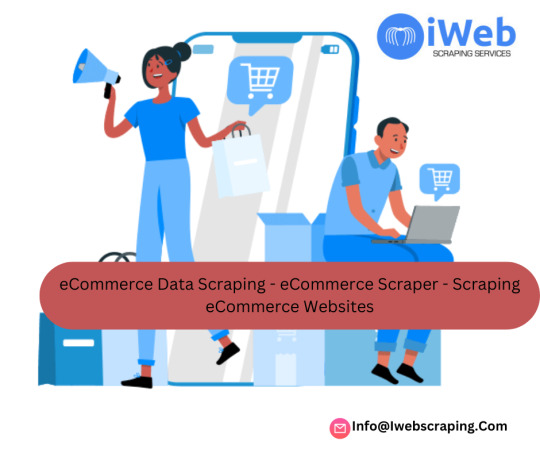
In the digital era, data is the new oil. For eCommerce businesses, the ability to harness and analyze data effectively can be a game-changer. This is where eCommerce data scraping comes into play. Whether you're looking to track competitors, optimize pricing strategies, or understand customer behavior, scraping data from eCommerce websites can provide invaluable insights. Let's dive into what eCommerce scraping is, how it works, and its myriad benefits.
What is eCommerce Data Scraping?
eCommerce data scraping involves extracting vast amounts of data from eCommerce websites. This process can include gathering product information, pricing, customer reviews, and more. The goal is to collect this data in a structured format for analysis, helping businesses make informed decisions.
Key Elements Scraped from eCommerce Websites
Product Details: Titles, descriptions, specifications, and images.
Pricing Information: Regular, discounted prices, and historical pricing trends.
Inventory Status: Availability and stock levels.
Customer Reviews: Ratings, feedback, and sentiment analysis.
Seller Information: Details about the sellers and their offerings.
How eCommerce Scraping Works
At its core, eCommerce scraping involves using automated bots, known as scrapers, to navigate and extract data from websites. Here’s a step-by-step overview of the process:
Identify the Target: Select the websites or pages you want to scrape.
Develop the Scraper: Create a bot using programming languages like Python with libraries such as BeautifulSoup or Scrapy.
Data Extraction: The bot sends requests to the target website and extracts the required data.
Data Cleaning and Storage: Clean the extracted data to remove duplicates or errors, then store it in a structured format like CSV or a database.
Data Analysis: Analyze the data using various tools and techniques to derive actionable insights.
Tools and Technologies for eCommerce Scraping
BeautifulSoup: A Python library for parsing HTML and XML documents. Ideal for smaller projects.
Scrapy: An open-source web crawling framework for more extensive scraping projects.
Selenium: Useful for scraping websites with dynamic content generated by JavaScript.
Octoparse: A no-code, user-friendly tool for non-programmers.
Benefits of eCommerce Data Scraping
1. Competitive Intelligence
By continuously monitoring your competitors, you can stay ahead of market trends. Scraping competitor websites helps in understanding their pricing strategies, new product launches, and promotional activities. This information can be crucial for making strategic business decisions.
2. Price Optimization
Dynamic pricing is a common strategy in eCommerce. By scraping pricing data from various sources, businesses can adjust their prices in real-time to remain competitive. This not only maximizes profits but also ensures customer satisfaction.
3. Market Research
eCommerce scraping can provide deep insights into market trends and consumer preferences. Analyzing customer reviews and feedback helps businesses understand what products are popular and why, guiding product development and marketing strategies.
4. Inventory Management
Keeping track of inventory levels across different platforms can be challenging. Scraping can automate this process, providing real-time updates on stock availability. This is particularly useful for businesses operating on multiple eCommerce platforms.
5. Data-Driven Marketing
Understanding customer behavior is key to effective marketing. By analyzing data from reviews and social media, businesses can tailor their marketing efforts to target specific demographics and enhance customer engagement.
Ethical Considerations and Legal Implications
While eCommerce scraping offers numerous benefits, it’s crucial to approach it ethically and legally. Unauthorized scraping can lead to legal issues and damage relationships with other businesses. Here are some best practices to consider:
Respect Robots.txt: Always check the website’s robots.txt file, which indicates which parts of the site can be scraped.
Rate Limiting: Avoid overloading websites with too many requests in a short period.
Data Privacy: Ensure that the data you collect does not infringe on user privacy or violate any laws.
Future Trends in eCommerce Data Scraping
As technology evolves, so do the methods and tools for data scraping. Artificial intelligence and machine learning are set to revolutionize how data is collected and analyzed. Expect to see more sophisticated scraping bots that can handle complex tasks and provide deeper insights.
1 note
·
View note
Text
Smart Retail Decisions Start with AI-Powered Data Scraping

In a world where consumer preferences change overnight and pricing wars escalate in real time, making smart retail decisions is no longer about instincts—it's about data. And not just any data. Retailers need fresh, accurate, and actionable insights drawn from a vast and competitive digital landscape.
That’s where AI-powered data scraping steps in.
Historically, traditional data scraping has been used to gather ecommerce data. But by leveraging artificial intelligence (AI) in scraping processes, companies can gain real-time, scalable, and predictive intelligence to make informed decisions in retailing.
Here, we detail how data scraping using AI is revolutionizing retailing, its advantages, what kind of data you can scrape, and why it enables high-impact decisions in terms of pricing, inventory, customer behavior, and market trends.
What Is AI-Powered Data Scraping?
Data scraping is an operation of pulling structured data from online and digital channels, particularly websites that do not support public APIs. In retail, these can range from product offerings and price data to customer reviews and availability of items in stock.
AI-driven data scraping goes one step further by employing artificial intelligence such as machine learning, natural language processing (NLP), and predictive algorithms to:
Clean and structure unstructured data
Interpret customer sentiment from reviews
Detect anomalies in prices
Predict market trends
Based on data collected, provide strategic proposals
It's not just about data-gathering—it’s about knowing and taking wise action based on it.
Why Retail Requires Smarter Data Solutions
The contemporary retail sector is sophisticated and dynamic. This is why AI-powered scraping is more important than ever:
Market Changes Never Cease to Occur Prices, demand, and product availability can alter multiple times each day—particularly on marketplaces such as Amazon or Walmart. AI scrapers can monitor and study these changes round-the-clock.
Manual Decision-Making is Too Slow Human analysts can process only so much data. AI accelerates decision-making by processing millions of pieces of data within seconds and highlighting what's significant.
The Competition is Tough Retailers are in a race to offer the best prices, maintain optimal inventory, and deliver exceptional customer experiences. Data scraping allows companies to monitor competitors in real time.
Types of Retail Data You Can Scrape with AI
AI-powered scraping tools can extract and analyze the following retail data from ecommerce sites, review platforms, competitor websites, and search engines:
Product Information
Titles, descriptions, images
Product variants (size, color, model)
Brand and manufacturer details
Availability (in stock/out of stock)
Pricing & Promotions
Real-time price tracking
Historical pricing trends
Discount and offer patterns
Dynamic pricing triggers
Inventory & Supply
Stock levels
Delivery timelines
Warehouse locations
SKU movement tracking
Reviews & Ratings
NLP-based sentiment analysis
Star ratings and text content
Trending complaints or praise
Verified purchase filtering
Market Demand & Sales Rank
Bestsellers by category
Category saturation metrics
Sales velocity signals
New or emerging product trends
Logistics & Shipping
Delivery options and timeframes
Free shipping thresholds
Return policies and costs
Benefits of AI-Powered Data Scraping in Retail
So what happens when you combine powerful scraping capabilities with AI intelligence? Retailers unlock a new dimension of performance and strategy.
1. Real-Time Competitive Intelligence
With AI-enhanced scraping, retailers can monitor:
Price changes across hundreds of competitor SKUs
Promotional campaigns
Inventory status of competitor bestsellers
AI models can predict when a competitor may launch a flash sale or run low on inventory—giving you an opportunity to win customers.
2. Smarter Dynamic Pricing
Machine learning algorithms can:
Analyze competitor pricing history
Forecast demand elasticity
Recommend optimal pricing
Retailers can automatically adjust prices to stay competitive while maximizing margins.
3. Enhanced Product Positioning
By analyzing product reviews and ratings using NLP, you can:
Identify common customer concerns
Improve product descriptions
Make data-driven merchandising decisions
For example, if customers frequently mention packaging issues, that feedback can be looped directly to product development.
4. Improved Inventory Planning
AI-scraped data helps detect:
Which items are trending up or down
Seasonality patterns
Regional demand variations
This enables smarter stocking, reduced overstock, and faster response to emerging trends.
5. Superior Customer Experience
Insights from reviews and competitor platforms help you:
Optimize support responses
Highlight popular product features
Personalize marketing campaigns
Use Cases: How Retailers Are Winning with AI Scraping
DTC Ecommerce Brands
Use AI to monitor pricing and product availability across marketplaces. React to changes in real time and adjust pricing or run campaigns accordingly.
Multichannel Retailers
Track performance and pricing across online and offline channels to maintain brand consistency and pricing competitiveness.
Consumer Insights Teams
Analyze thousands of reviews to spot unmet needs or new use cases—fueling product innovation and positioning.
Marketing and SEO Analysts
Scrape metadata, titles, and keyword rankings to optimize product listings and outperform competitors in search results.
Choosing the Right AI-Powered Scraping Partner
Whether building your own tool or hiring a scraping agency, here’s what to look for:
Scalable Infrastructure
The tool should handle scraping thousands of pages per hour, with robust error handling and proxy support.
Intelligent Data Processing
Look for integrated machine learning and NLP models that analyze and enrich the data in real time.
Customization and Flexibility
Ensure the solution can adapt to your specific data fields, scheduling, and delivery format (JSON, CSV, API).
Legal and Ethical Compliance
A reliable partner will adhere to anti-bot regulations, avoid scraping personal data, and respect site terms of service.
Challenges and How to Overcome Them
While AI-powered scraping is powerful, it’s not without hurdles:
Website Structure Changes
Ecommerce platforms often update their layouts. This can break traditional scraping scripts.
Solution: AI-based scrapers with adaptive learning can adjust without manual reprogramming.
Anti-Bot Measures
Websites deploy CAPTCHAs, IP blocks, and rate limiters.
Solution: Use rotating proxies, headless browsers, and CAPTCHA solvers.
Data Noise
Unclean or irrelevant data can lead to false conclusions.
Solution: Leverage AI for data cleaning, anomaly detection, and duplicate removal.
Final Thoughts
In today's ecommerce disruption, retailers that utilize real-time, smart data will be victorious. AI-driven data scraping solutions no longer represent an indulgence but rather an imperative to remain competitive.
By facilitating data capture and smarter insights, these services support improved customer experience, pricing, marketing, and inventory decisions.
No matter whether you’re introducing a new product, measuring your market, or streamlining your supply chain—smart retailing begins with smart data.
0 notes
Text
Wise Retail Choices Begin With AI-Driven Data Scraping. A competitive advantage can be attained by businesses in retail using AI-powered data scraping solutions to analyze prices, observe product trends, and study consumer behavior on different platforms. This real-time data enables retailers to make informed choices, maximize product listings, and react quicker to customer demands, which results in increased efficiency and profitability.
0 notes
Text
Automated Web Scraping Services for Smarter Insights
Transforming Business Intelligence with Automated Web Scraping Services
In today’s data-driven economy, staying ahead means accessing the right information—fast and at scale. At Actowiz Solutions, we specialize in delivering automated web scraping solutions that help businesses across ecommerce, real estate, social platforms, and B2B directories gain a competitive edge through real-time insights.
Let’s explore how automation, AI, and platform-specific scraping are revolutionizing industries.

Why Automate Web Scraping?
Manually collecting data from websites is time-consuming and inefficient. With our automated web scraping services, powered by Microsoft Power Automate, you can streamline large-scale data collection processes—perfect for businesses needing continuous access to product listings, customer reviews, or market trends.
ChatGPT for Web Scraping: AI Meets Automation
Leveraging the capabilities of AI, our solution for ChatGPT web scraping simplifies complex scraping workflows. From writing extraction scripts to generating data patterns dynamically, ChatGPT helps reduce development time while improving efficiency and accuracy.
eBay Web Scraper for E-commerce Sellers
Whether you're monitoring competitor pricing or extracting product data, our dedicated eBay web scraper provides access to structured data from one of the world’s largest marketplaces. It’s ideal for sellers, analysts, and aggregators who rely on updated eBay information.
Extract Trends and Consumer Preferences with Precision
Tracking what’s hot across categories is critical for strategic planning. Our services allow businesses to extract marketplace trends, helping you make smarter stocking, marketing, and pricing decisions.
Use a Review Scraper to Analyze Customer Sentiment
Understanding customer feedback has never been easier. Our review scraper pulls reviews and ratings from platforms like Google, giving you valuable insight into brand perception and service performance.
Scrape YouTube Comments for Audience Insights
If you're running video marketing campaigns, you need feedback at scale. With our YouTube comments scraper, built using Selenium and Python, you can monitor user engagement, sentiment, and trending topics in real-time.
TikTok Scraping with Python for Viral Content Discovery
TikTok trends move fast—our TikTok scraping in Python service helps brands and analysts extract video metadata, hashtags, and engagement stats to stay ahead of viral trends.
Extract Business Leads with TradeIndia Data
For B2B marketers, sourcing accurate leads is key. Use our TradeIndia data extractor to pull business contact details, categories, and product listings—ideal for targeting suppliers or buyers in India’s top B2B portal.
Zillow Web Scraping for Real Estate Intelligence
Need real estate pricing, listings, or rental trends? Our Zillow web scraping solutions give you access to up-to-date property data, helping you analyze market shifts and investment opportunities.
Final Thoughts
Automated web scraping is no longer a luxury—it’s a necessity. Whether you're in ecommerce, social media, real estate, or B2B, Actowiz Solutions offers the tools and expertise to extract high-quality data that fuels business growth.
Get in touch today to discover how our automation-powered scraping services can transform your decision-making with real-time intelligence.
#AutomatedWebScrapingServices#ChatGPTWebScraping#EBayWebScraper#ExtractMarketplaceTrends#ReviewScraper#YouTubeCommentsScraper#ZillowWebScraping#TradeIndiaDataExtractor
0 notes